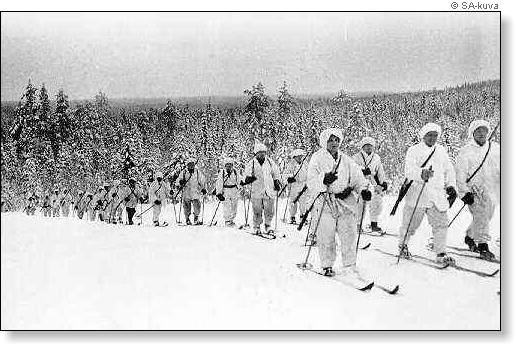Finland’s independence was made possible by the Russian Revolution of February-March 1917. Proclaimed at the end of 1917, after the “Great Socialist Revolution of October”, Finland’s independence was not immediately recognized by other European states. Paradoxically, the Bolshevik government led by Vladimir Ilyich Lenin was the first one to recognize the new state.
Finland became an autonomous Grand Duchy of the Russian Empire after being conquered by the Russians from the Swedes in 1809. The province’s autonomy was, however, restricted at the end of the 19th century and at the beginning of the 20th century, amid a growing affirmation of the Finnish national identity. Finland’s full autonomy was reinstated in March 1917, following a decree signed by Prince Georgy Lvov, the first Prime Minister of the Provisional Russian Government, established in the wake of the Revolution.
Finland was an important part of the Russian defensive system, even more so in the beginning of 1917. The city of Helsinki was a base of the Baltic Fleet, which was tasked with blocking a possible attack on the imperial capital, Petrograd. In addition, several regiments and Russian divisions were stationed on the territory of the Grand Duchy, numbering about 30-35.000 soldiers. Immediately after the collapse of the Russian Empire, soldier committees took control of these military forces and many of its officers were shot.

In this climate, although public opinion was considering maintaining autonomy, an increasing number of voices began to support the idea of independence. Due to growing tensions between the Finns and the Provisional Government, more and more Russian soldiers were transferred to Finland, the official pretext being to prevent a possible “German attack”. Gradually, the number of Russian soldiers stationed in the Grand Duchy reached about 100.000. In response, the Finns began to prepare a military force called the “Suojeluskunta”, disguised as a fire brigade.
Those who advocated for independence also received the unexpected support of the Bolsheviks, who wanted to use the right to national self-determination as a weapon in their struggle against the Provisional Government. On May 2, Lenin published an article in Pravda criticizing the Provisional Government for not being able to find a solution in relation to Finland and arguing that the secession of Finland would hurry the revolutionary process.
However, the failure of the July 1917 coup forced Lenin to flee to Finland in order to escape arrest. He settled in Helsinki, and a month later he moved to Viipuri (the current Russian city of Vyborg), that was at that time in Finland. From here, Lenin wrote articles and coordinated actions in preparation for the Bolshevik Revolution.
The “Great Socialist Revolution of October” divided the Finnish political forces in two. The Social Democrats wanted to gain Finland’s independence with the help of the new Bolshevik government in Russia. On the other hand, the “bourgeois” parties demanded the immediate separation from Russia and refused any support from Lenin to achieve this goal. Relationships between these political forces have deteriorated rapidly, becoming extremely tense. Although initially the social democrats supported independence, their attitude changed under the influence of events in Russia.
The Finnish Declaration of Independence
On November 27, 1917, Pehr Evind Svinhufvud was appointed president of the Senate. Svinhufvud, a lawyer and conservative politician, was a fierce opponent of communism. On December 4, he presented a statement to the Finnish Parliament (“Eduskunta”) stating that the independence of Finland was a de facto reality, and that the Finnish people “took their fate in their own hands”:
“The Finnish Parliament has, on the 15th day of last November, in support of Section 38 of the Constitution, declared to be the Supreme holder of State Authority as well as set up a Government of the country, that has taken to its primary task the realization and safeguarding of Finland’s independence as a state. The people of Finland have by this step taken their fate in their own hands: a step both justified and demanded by present conditions. The people of Finland feel deeply that they cannot fulfil their national duty and their universal human obligations without complete sovereignty. The century-old desire for freedom awaits fulfilment now; The People of Finland have to step forward as an independent nation among the other nations in the world. (…)”.
Two days later, the Parliament was convened to discuss two different declarations on Finland’s independence, one supported by Svinhufvud and the other by the Social Democrats. The “Finnish Declaration of Independence”, backed by conservative political forces, was voted with 100 votes for to 88 against. Immediately after the historic vote of December 6, 1917, the Finns tried to obtain the international recognition of their country, but it was made conditional on the recognition of Finland’s independence by Russia.
Under these circumstances, Pehr Evind Svinhufvud personally went to Petrograd, where he met Lenin. Surprisingly, this was successful. On December 27, the Central Committee of the Bolshevik Party recognized Finland’s independence. Lenin recognized the independence of the new state to demonstrate the attachment of the new Bolshevik government to the ideal of national self-determination. Lenin believed that the states that emerged from the Russian Empire would later join the Russian Socialist Federation.
The Russian Soviet Federative Socialist Republic recognized Finland’s independence by a document signed by Vladimir Ilyich Lenin as President of the Council of People’s Commissars (the Russian Government), as well as by the “People’s Commissars”, among them Joseph Stalin and Leon Trotsky. On January 4, 1918, Iakov Sverdlov, chairman of the The All-Russian Central Executive Committee, signed a document that recognized Finland’s independence. On this occasion, Stalin (People’s Commissar of Nationalities) made a speech criticizing Finnish social democrats for not taking the necessary measures for the country’s independence, as the Soviets had to recognize the “bourgeois” Senate and not a government of the “representatives of the Finnish proletariat”.
Bibliography:
Elena Dragomir, Silviu Miloiu, Istoria Finlandei [The history of Finland], Cetatea de Scaun Publishing House, Târgoviște, 2010-2011.
Jason Lavery, The History of Finland, Greenwood Publishing Group, 2006.
Translated by Laurențiu Dumitru Dologa

